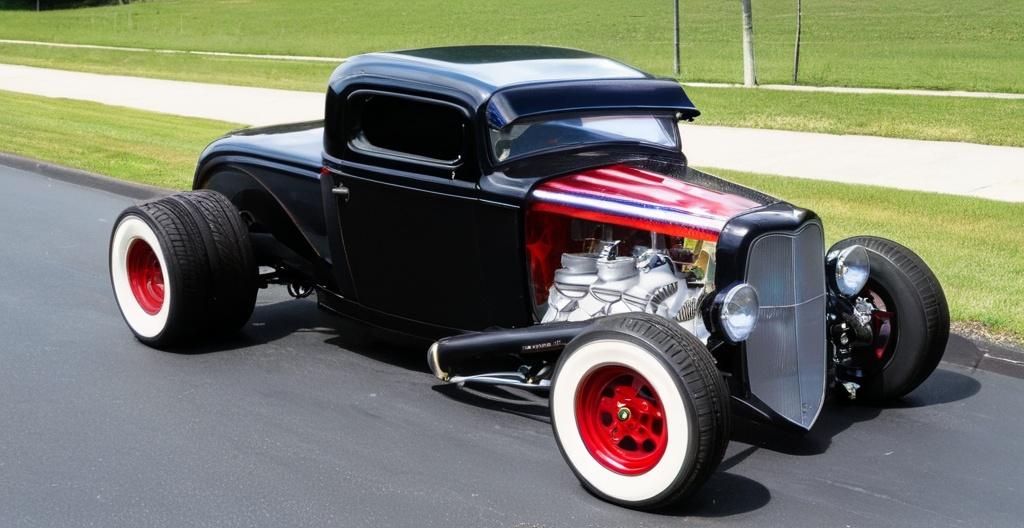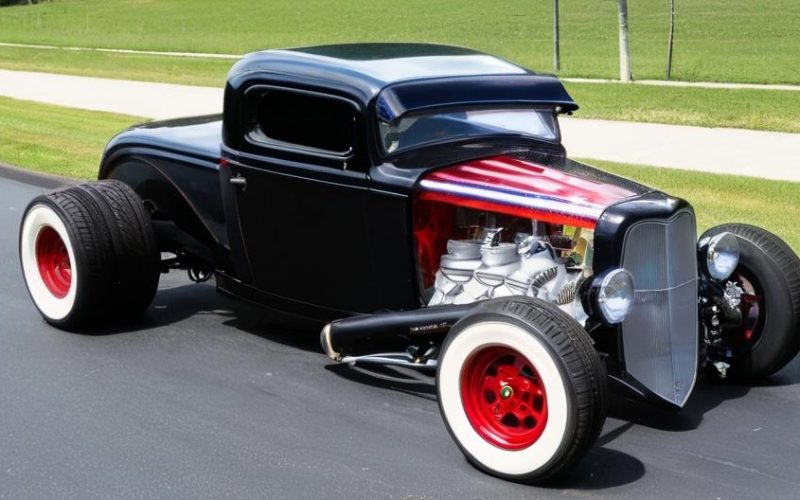Key Take Aways About Carbureted vs. Fuel Injection Systems in Street Rods
- Carburetors offer a classic driving experience with a nostalgic aesthetic and hands-on tinkering.
- Fuel injection systems provide efficiency, adaptability, and minimal manual adjustments using electronic sensors.
- Carbureted engines deliver raw power but may sacrifice fuel economy; fuel injection balances performance with efficiency.
- Tinkerers enjoy carburetors for manual adjustments, while tech-savvy individuals appreciate fuel injection’s electronic precision.
- The choice between systems depends on preference for vintage charm or modern reliability in a street rod.

Carburetors: Old School Cool or Just Old?
Carburetors have been around since your grandpa was drag racing his hot rod down the strip. They were the standard for getting fuel into an engine back when the Beatles were topping the charts. So, why do some street rodders still swear by them? For starters, a carburetor can give your ride that classic feel, both aesthetically and in terms of driving experience. It’s all about the mechanical ballet of levers and springs, a symphony of engine sounds that tells you exactly what’s happening under the hood.
A well-tuned carburetor can make an engine sing, with throttle response that kicks in like a snappy one-liner at the right moment. But like any good punchline, it requires the right timing and setup. A carburetor relies on a vacuum to suck in fuel and mix it with air, a process that’s both simple and, in its simplicity, prone to a couple of hiccups. For instance, it doesn’t automatically adjust for altitude or temperature changes. Ever try running your car in Denver after tuning it at sea level? Yeah, you might end up with a day full of stumbles and sputters.
Fuel Injection: The New Kid on the Block
Then we have fuel injection systems, the tech-savvy cousin who shows up at your family barbecue with all the latest gadgets. Designed for efficiency and performance, these systems tailor the air-fuel mixture for optimal combustion no matter where you’re driving or how hot it is outside. They take the guesswork out of adjusting mixtures because they use electronic sensors to do it on the fly. It’s like having a tiny computer under your hood that’s always making sure things run smoothly.
A fuel-injected engine starts up more reliably than your morning coffee maker and idles smoother than a well-oiled politician. It can adapt to the environment faster than a lizard on a rock in the desert. But, you know, this sophistication comes at a price; the complexity of the system means that if something goes wrong, it might require a trip to a pro or a hefty investment in diagnostic equipment. Good luck fixing it with just a wrench and a screwdriver.
Performance and Economy: The Balancing Act
Street rodders often have a love-hate relationship with their engines, especially when it comes to balancing performance with fuel economy. Carbureted engines can deliver raw, unadulterated power when tuned right, but that often comes at the expense of gas mileage. It’s like having a pet tiger; impressive, but it eats a lot. On the other hand, fuel injection tends to be more fuel-efficient because it can precisely regulate the fuel-air mixture, delivering performance that’s both powerful and economical.
Imagine planning a road trip with your street rod. With a carburetor, you might be stopping at every gas station, especially if you’ve got a heavy foot. But with fuel injection, you could glide past pumps more often, reminding your wallet it doesn’t have to be constantly empty.
The Tinkerer’s Delight
For those who love to get their hands dirty, carburetors offer a kind of hands-on experience that can feel almost meditative. Adjusting jets, playing with the choke, and tuning by ear—it’s practically an art form. It’s perfect for those weekend warriors who find the mechanical tinkering as satisfying as the drive itself.
Conversely, fuel injection is for those who enjoy the marriage of mechanics and technology. It’s less about the hands-on fiddling and more about understanding the electronic side of things. If you’re handy with a laptop, tuning a fuel-injected engine can be as rewarding as a day spent in the garage. You can plug into your engine’s brain and make adjustments with a few clicks—just don’t spill your coffee on the laptop.
Retro Cool or Modern Efficiency?
When it comes to choosing between carburetors and fuel injection, it boils down to what kind of experience you’re after in your street rod. Is it the vintage vibe, with all its quirks and charms, or the modern reliability you want? If authenticity and nostalgia are your game, a carburetor might be calling your name. But if you prefer the ease of mind that comes with technology doing the heavy lifting, fuel injection may be your cup of tea.
In the end, both systems have their pros and cons, reflecting the trade-offs between old-school cool and new-school efficiency. Whether you’re a carburetor enthusiast or a fuel injection aficionado, you’re part of a scene that cherishes the art and science of making cars go fast. And that, no matter how you fuel it, never goes out of style.
